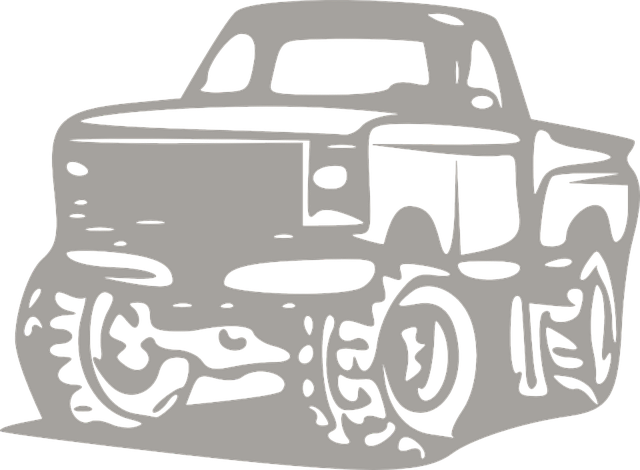Brownville's diverse truck fleet faces accelerated brake pad wear due to challenging terrain, requiring regular monitoring and timely replacement. Regular maintenance is crucial for safety and optimal braking performance. The Brownsville Fleet prioritizes brake pad replacement, using shackles to secure parts and ensuring driver and passenger security. Replacing pads involves parking, jacking up the vehicle, removing the wheel, inspecting and replacing pads, and testing brakes. Post-replacement, regular inspections, fluid checks, lubrication, and component maintenance are vital for consistent performance and safety.
Unleash your knowledge on truck maintenance with our comprehensive guide. We explore critical aspects of truck brake pad replacement, offering insights that go beyond the basics. From understanding wear and tear on pads to a case study of the iconic Brownsville Fleet, this article is your go-to resource. Learn to identify shackles—essential parts that ensure smooth braking—and master the step-by-step process of replacing truck brake pads. Plus, discover safety considerations post-replacement for optimal vehicle performance.
- Understanding Truck Brake Pads: Wear and Tear
- The Brownsville Fleet: A Case Study in Commercial Vehicles
- Identifying Shackles: Parts and Functions
- Replacing Brake Pads: Step-by-Step Guide
- Safety and Maintenance: Post-Replacement Considerations
Understanding Truck Brake Pads: Wear and Tear

Truck brake pads, a critical component in ensuring safe and efficient vehicle operation, are subject to wear and tear over time, especially for those operating in demanding environments like Brownsville’s diverse fleet. Understanding the dynamics of this wear is essential for maintaining optimal braking performance and preventing unexpected failures.
In the context of a Brownsville fleet, where trucks often navigate challenging terrain and varying road conditions, brake pads experience accelerated degradation. Regular wear can lead to a gradual reduction in pad thickness, affecting the vehicle’s stopping power. Prompt recognition of these signs is vital; thinned pads may require timely replacement to avoid compromising safety. Moreover, Brownsville fleet managers should stay attuned to potential issues like metal fatigue or debris entanglement, which can expedite pad deterioration, underscoring the importance of regular maintenance checks and prompt truck brake pad replacement for the overall well-being of their vehicles.
The Brownsville Fleet: A Case Study in Commercial Vehicles

The Brownsville Fleet, a historic collection of commercial vehicles, serves as an intriguing case study for understanding the evolution of transport and maintenance practices. This unique fleet, known for its diverse array of trucks, has played a significant role in shaping the industry. One critical aspect that sets the Brownsville Fleet apart is the meticulous approach to truck brake pad replacement. With a focus on safety and efficiency, the team behind this fleet ensures that each vehicle undergoes regular maintenance, including prompt brake pad replacements.
This rigorous maintenance routine is driven by the understanding that truck brake pads are vital for ensuring the safety of both the drivers and other road users. By staying on top of brake pad replacements, the Brownsville Fleet demonstrates a commitment to preventing accidents caused by worn-out brakes. Moreover, this practice highlights the importance of regular vehicle inspections in maintaining optimal performance and reliability, ultimately contributing to a more secure and efficient transportation network.
Identifying Shackles: Parts and Functions

Shackles, an essential component in various industries, particularly transportation and logistics, play a critical role in securing and connecting vehicles and their components. When it comes to identifying shackles, understanding their parts and functions is key, especially for those involved in maintaining fleets, like the Brownsville fleet. These sturdy metal devices are designed to withstand significant force and are often used in heavy-duty applications, ensuring the safe transport of goods and people.
In the context of a truck, for instance, shackles serve multiple purposes. They connect trailer hitches to trucks, allowing for the secure towing of trailers. Additionally, they facilitate the attachment of brake pads, which are crucial for safety during travel. Regular replacement of truck brake pad shackles is vital for maintaining optimal vehicle performance and ensuring the well-being of drivers and passengers. The Brownsville fleet, known for its robust operations, relies on such meticulous maintenance to keep its vehicles in top condition, adhering to safety standards while navigating various terrains.
Replacing Brake Pads: Step-by-Step Guide

Replacing your truck’s brake pads is a crucial maintenance task for any vehicle owner, especially those in the Brownsville fleet. It’s a relatively straightforward process that can be accomplished with the right tools and some basic knowledge. Here’s a step-by-step guide tailored for efficient Brownsville fleet truck brake pad replacement.
First, ensure your vehicle is on a level surface and apply the parking brake. Jack up the truck and secure it using jack stands for safety. With the wheel off, locate the brake pads and inspect them for wear or damage. Remove the old pads by unscrewing or unbolting them from the brake caliper. Clean the caliper and ensure no debris remains. Install the new pads, ensuring they are properly seated within the caliper. Double-check that everything is secure before lowering the truck. Test the brakes gently to confirm their functionality.
Safety and Maintenance: Post-Replacement Considerations

After a successful Brownsville fleet truck brake pad replacement, ensuring safety and proper maintenance becomes paramount to prevent future issues. It’s crucial to regularly inspect the newly installed pads, checking for any signs of wear or damage. Regular checks can help catch potential problems early on, enhancing overall vehicle safety.
One key aspect is to maintain consistent braking performance. This involves keeping brake fluids at optimal levels and ensuring all components are tightly secured. Proper maintenance also includes lubricating pins and cylinders as required, which not only improves braking efficiency but also prolongs the lifespan of the replacement parts, such as those experienced with Brownsville fleet’s high-quality truck brake pad options.
The journey through understanding truck brake pads, exploring the Brownsville Fleet as a real-world case study, identifying shackles’ critical role, and mastering brake pad replacements equips readers with vital knowledge. By adhering to safety and maintenance guidelines post-replacement, fleet managers can ensure optimal performance and enhanced safety for the Brownsville Fleet and similar commercial vehicles. Embracing proactive maintenance practices is key to preventing costly breakdowns and keeping operations running smoothly. For those considering a career in vehicle maintenance, this guide offers an excellent starting point for understanding the intricacies of truck brake pad replacement and the broader implications for fleet management.



